Looking Back at the Design Journey
2021. September 23.
In last week’s spotlight, we took a closer look at the Cooperative mode of Voidfall, wrapping up the mechanic-focused part of the series. Now with only one week left until the campaign, this last spotlight will be dedicated to a little more personal topic - the design journey from where it all started to where we are now!
It all started back in 2005 when I set about designing a Space 4X board game. I wanted a game that was playable in 2 hours but had all the usual elements of games that typically took longer - combat, build-up, technology, advancement. From that starting point, Ascendancy was born and was promptly signed by JKLM in 2006. Let’s just say that at that point, I had no idea of the journey this little game would take!
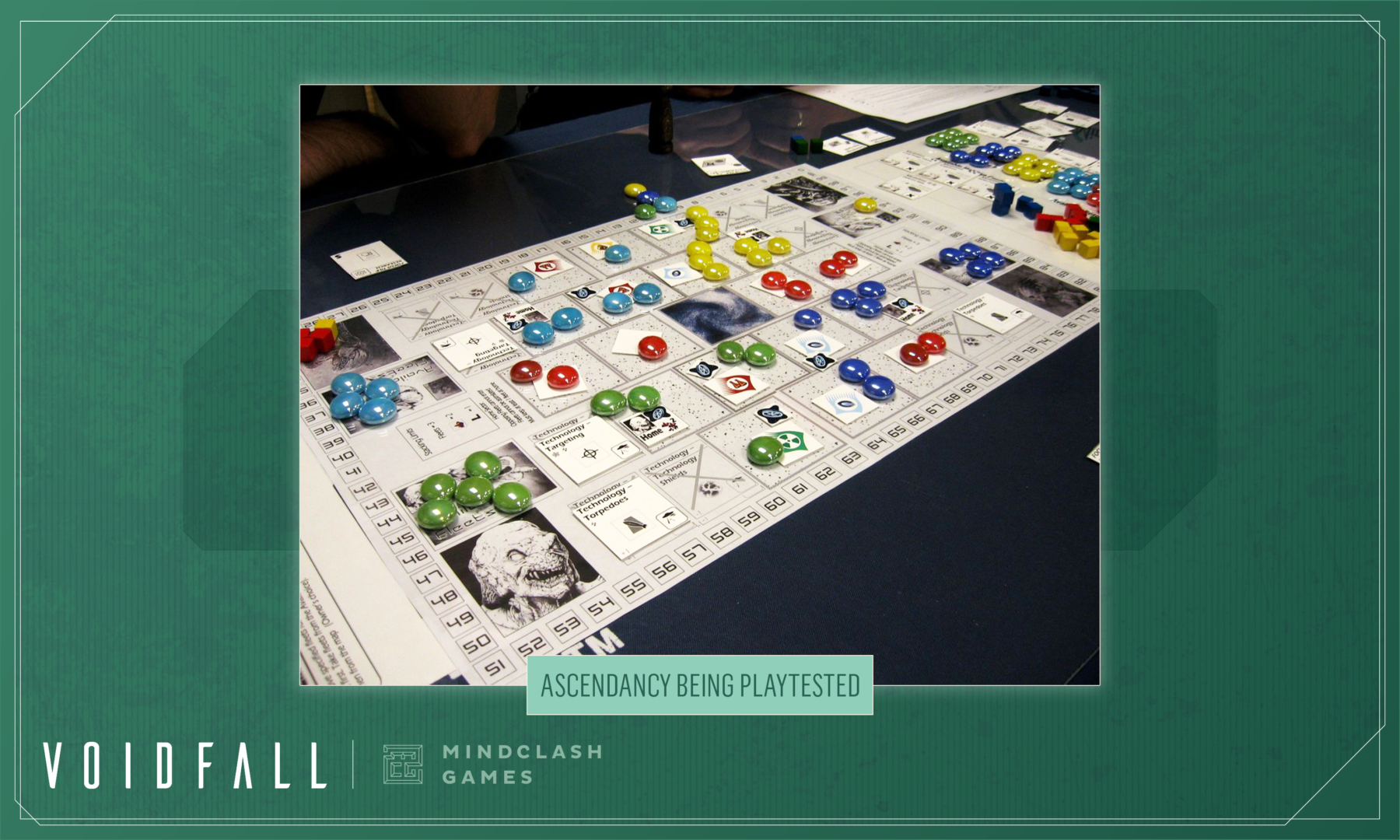
As the years passed, things changed at JKLM. They renamed the game Alien Ascendancy and pushed back its release several times. Then in 2010 JKLM went into liquidation. As I parted ways with the publisher, it looked like the design was on its way to becoming just another abandoned prototype.
However, at that point, Spiral Galaxy realized the potential of the game, stepped in, and resurrected the project in the summer of 2011. Adding their own spin to the design, they increased the number of Alien Races and added a variety of maps. The game was renamed to Omega Centauri, and finally published in 2014!
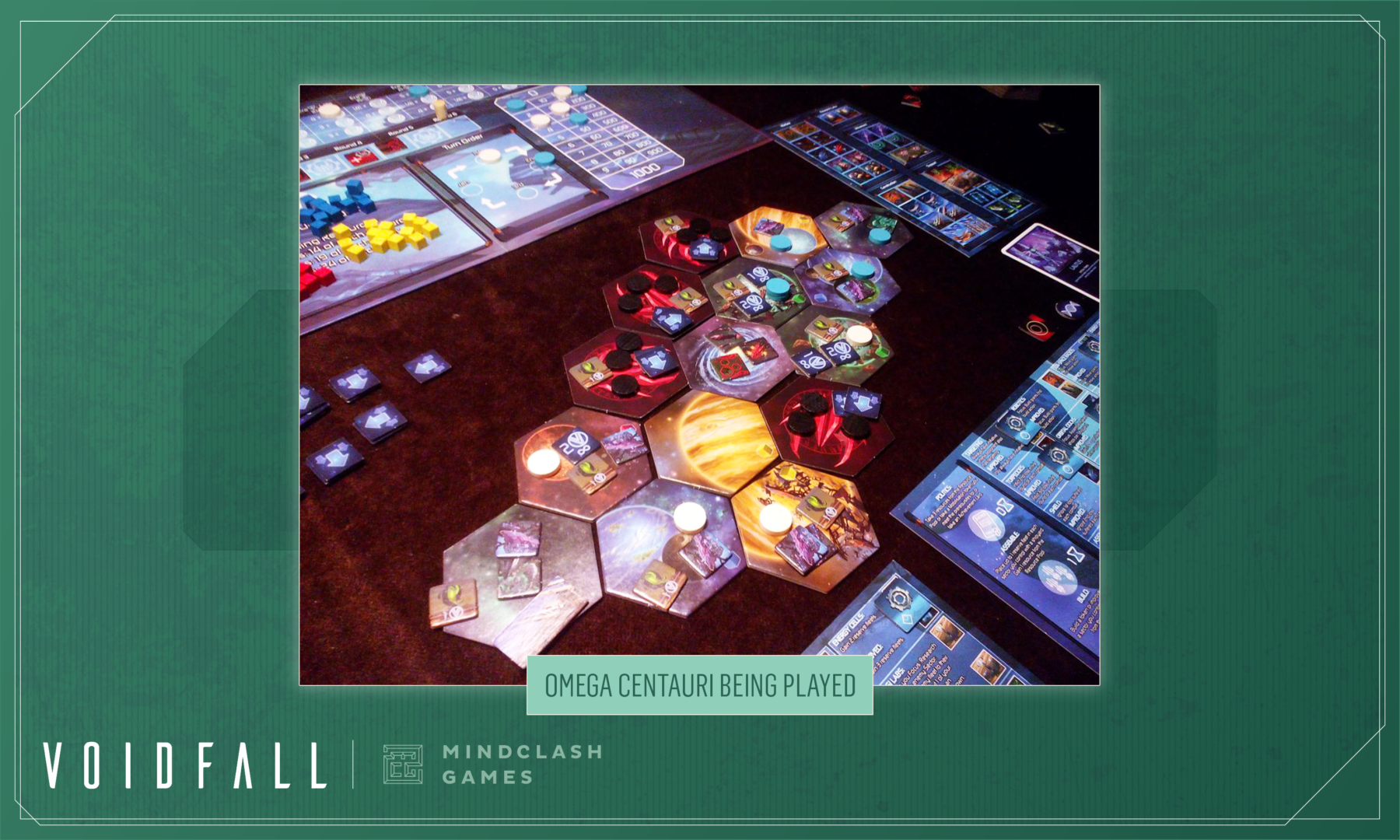
While a few connoisseurs loved the unique solution of the deterministic combat and the tension created by the tightness of the map and of fleet power, the independent publisher and the unknown designer at the time meant the game flew stealth mode under the majority of radars and was not the roaring success that had been hoped for. There it might have stayed, with the design doomed to be eternally eclipsed by the other more well-known games in the genre. Fortunately, it is at this point that David entered the picture.
David was starting on his own design journey in 2014, with a co-design of his, [redacted], having just been published. As luck would have it, both David and I attended the same board game meetup group in London and attended the same convention organized by the group. We met as two fresh designers, clutching our newly published games, swapping stories and game ideas. That might have been the end of it, had Omega Centauri’s solution to space combat and technologies not skyrocketed the game to David’s Top 10 at the time. Many years later, when David was working with NSKN as a game developer, my name popped up on a little civilization-building card game (now published as two games, Imperium: Classics and Imperium: Legends by Osprey Games). I won’t go into the story of Imperium here - just to say working on that game cemented a design partnership between us.
Omega Centauri was mentioned a few times, and David felt we had both matured and learnt enough as designers that now perhaps that quirky little Euro 4X could get a second edition, so a few more players could experience it...
Fast forward to Summer 2018 and on a long drive back from UK Games Expo, David was talking to Viktor (CEO and head of game design at Mindclash Games) and floated the idea of Mindclash doing a Space 4X. Viktor thought the concept was interesting, but he was not quite sure where they could start. David suggested that Viktor play Omega Centauri - which at this point Viktor had never even heard of, but after playing it, quickly became intrigued with the possibilities.
So the initial plan was a sequel to Omega Centauri, but after the first few iterations, the philosophy of “narrative mechanisms” kicked in, since it was a staple of what Mindclash has always been looking for. They asked if the cubes from Omega Centauri could be removed since it was too abstract for the theme. Now, as the few of you who’ve played Omega Centauri will know: cubes are a major part of the game, they are the abstraction of the galactic economy. Some might say, playing the game is all about the cubes! Of course, the request was far deeper than that: the underlying requirement was to make the players feel like they were directing the large-scale development of a space empire, and not just collecting colored cubes.
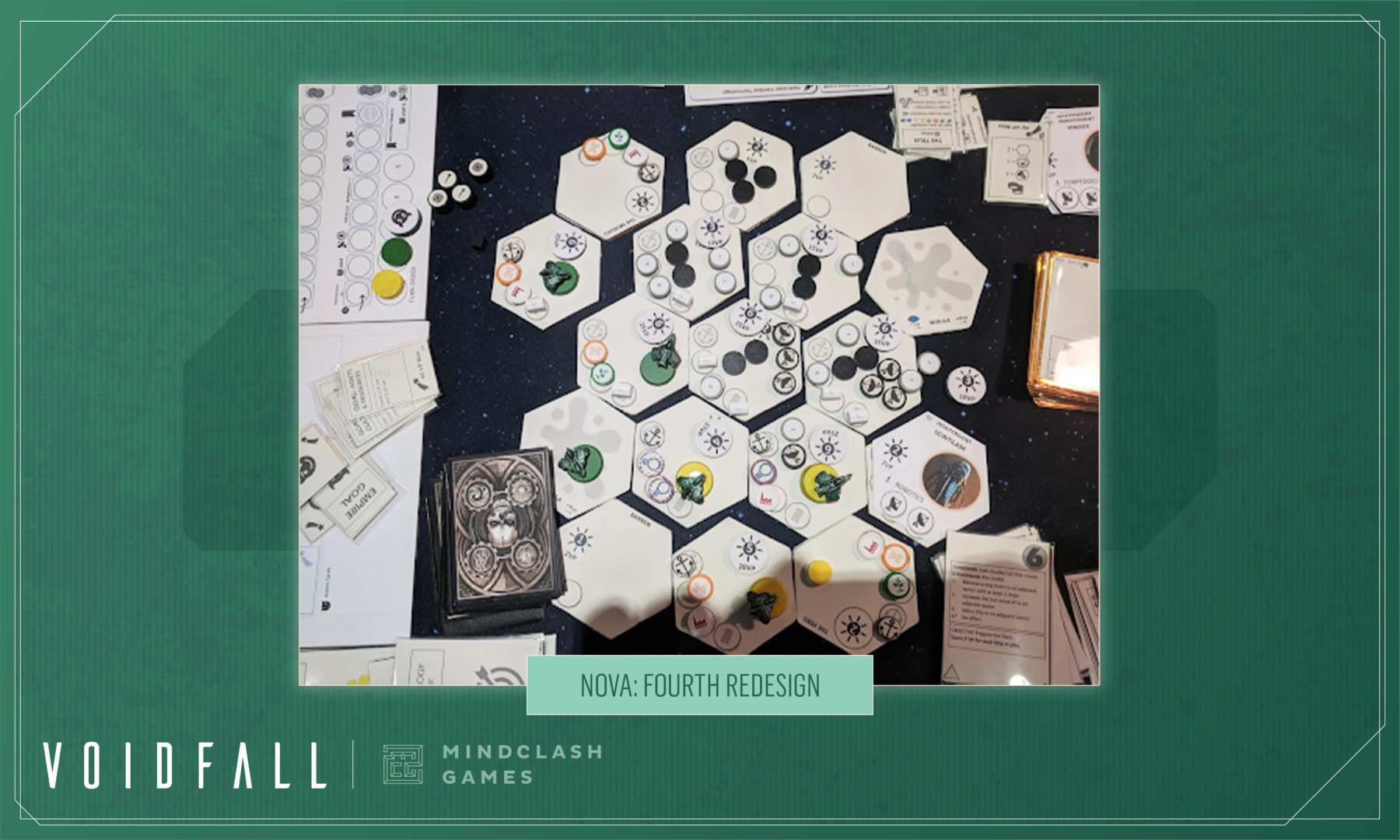
What followed were two years of me and David finding out how not to make a Space 4x. The concept of a sequel to Omega Centauri slowly went out the window, just retaining the core concepts:
🌠Deterministic combat,
🌠Impactful actions - with known impacts,
🌠Limited, non-random Technology offer, with a flat “tech tree” of improvements,
🌠Balancing a large empire versus an “easy to score" empire (i.e. limited fleet power).
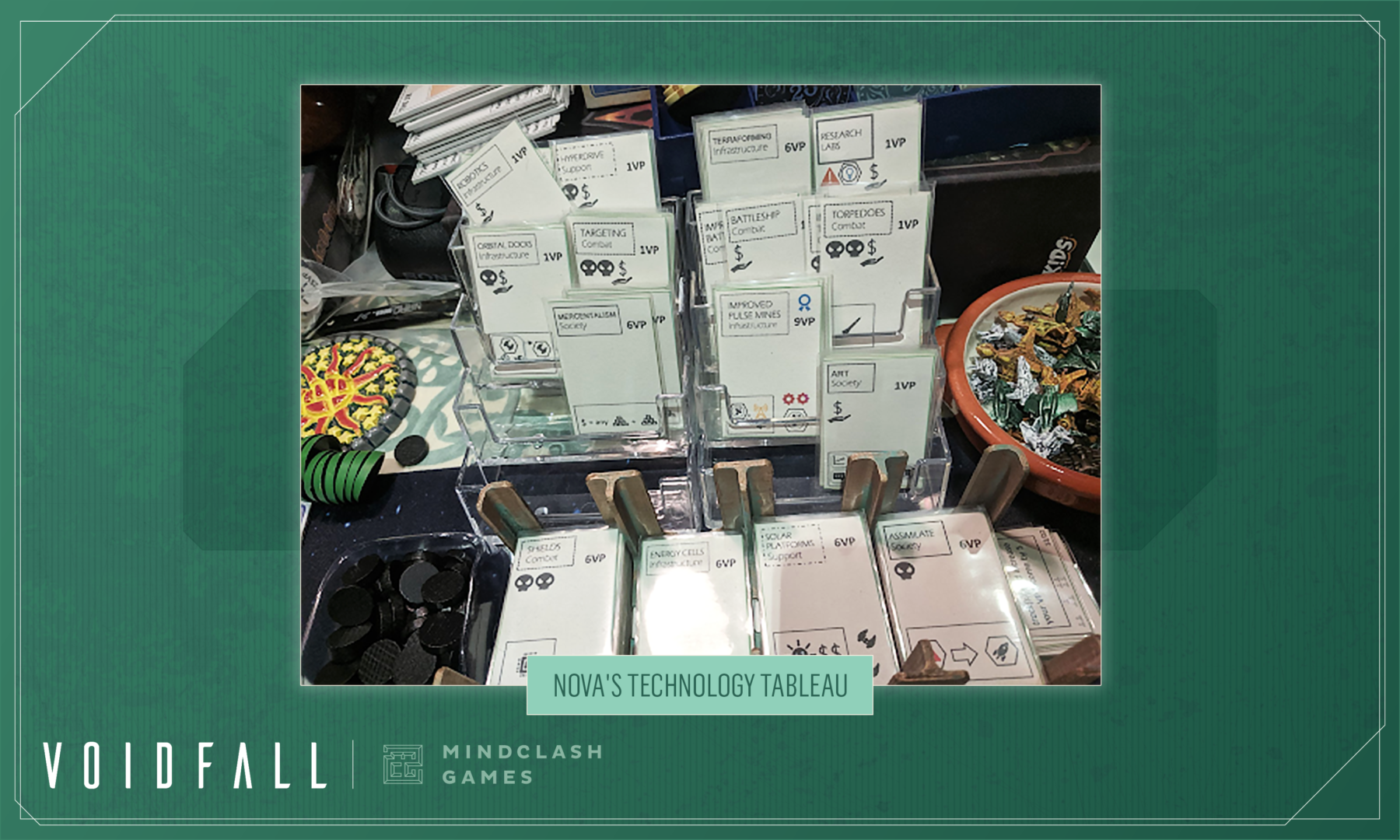
As the Mindclash team were presented with each version of Nova (Voidfall’s working title), they would love it, but kept wanting something more, something to lift it to a “true Mindclash” game. We would all discuss and come up with some changes. Only a minor change or two, right? Not quite, as all the systems in the game are so interconnected, changing one thing was a cascade of changes. Furthermore, thinking about the changes would inspire other changes too. We were all working to make the game better. Finally, version 5 of Nova had that spark that meant the core game design was considered final.
This being Mindclash meant the work did not stop there: what followed was an intense period of game development to map out the game modes, tighten the systems and of course incorporate some world building. This is the point ‘Aliens’ were dropped and a human-centric view was adopted, and the corrupt failing Empire of Omega Centauri was replaced with something far more horrendous and impactful, the Voidborn. This new setting then of course inspired a new mechanism: the Corruption (itself a reworking of a Threat track, which was a reworking of Omega Centauri’s Empire Technologies), which had to be thoroughly integrated into the game.
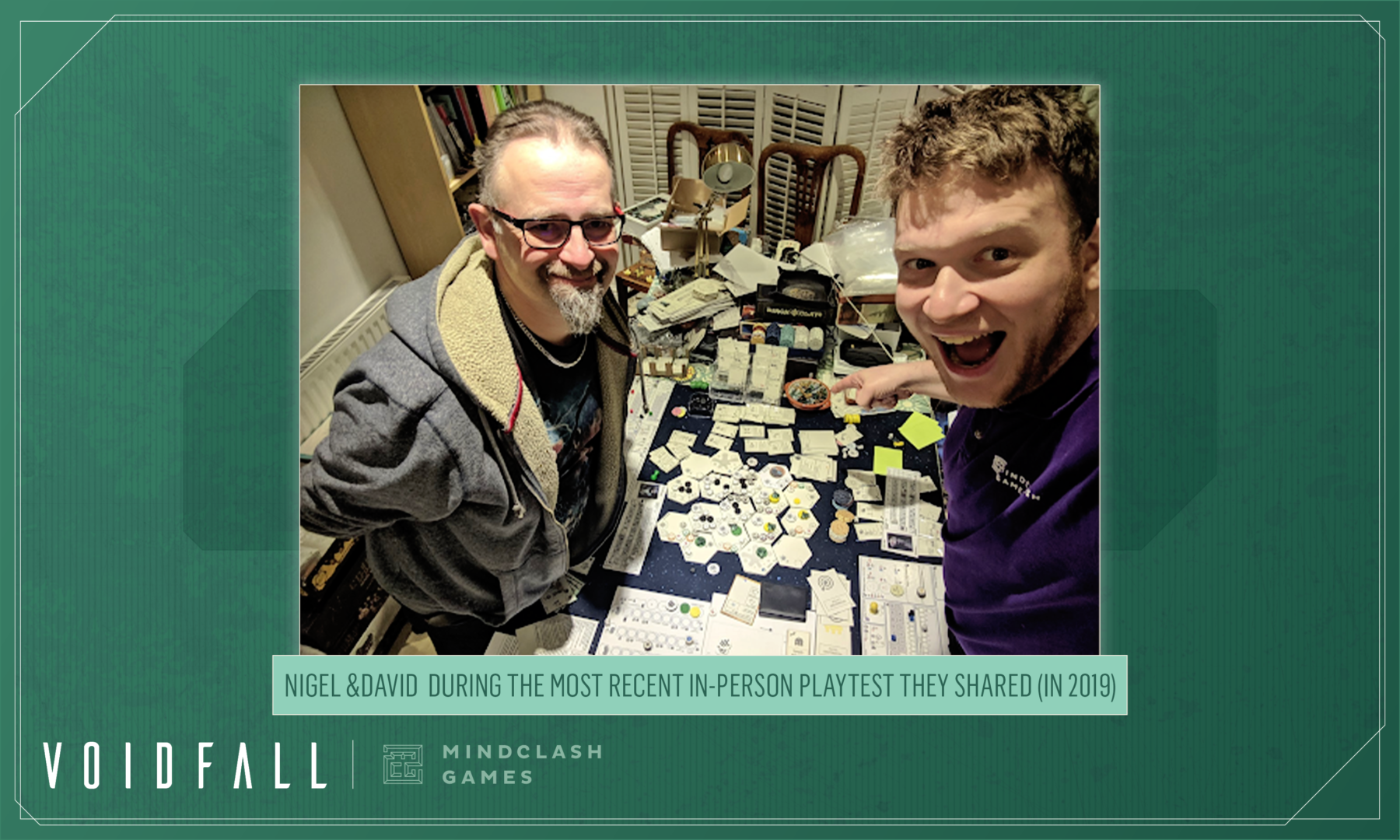
The final piece of the jigsaw was Mindclash bringing Ian O’Toole on board, including his unique take on developing the look of the game, as well as many ideas for the expanding backstory and lore of Voidfall.
Every mechanism and system in Voidfall has gone through a baptism of fire - anything that did not quite fit, did not make sense, or had an exception that did not smoothly mesh with the rest was reworked, or promptly abandoned. The game we are presenting now is far from the originally imagined simple sequel to Omega Centauri, rather it is a unique re-interpretation of the Euro 4X genre - offering competitive, cooperative and solo modes, all being equally rounded and using a core set of rules and components while integrating with the kind of mechanisms telling their own story. We are nearing the end of the journey but we are not quite there yet - we have dedicated four more months of development after the Kickstarter to implement the feedback from the campaign, iterate the UI and polish the rulebook to make Voidfall as good as it can possibly be!
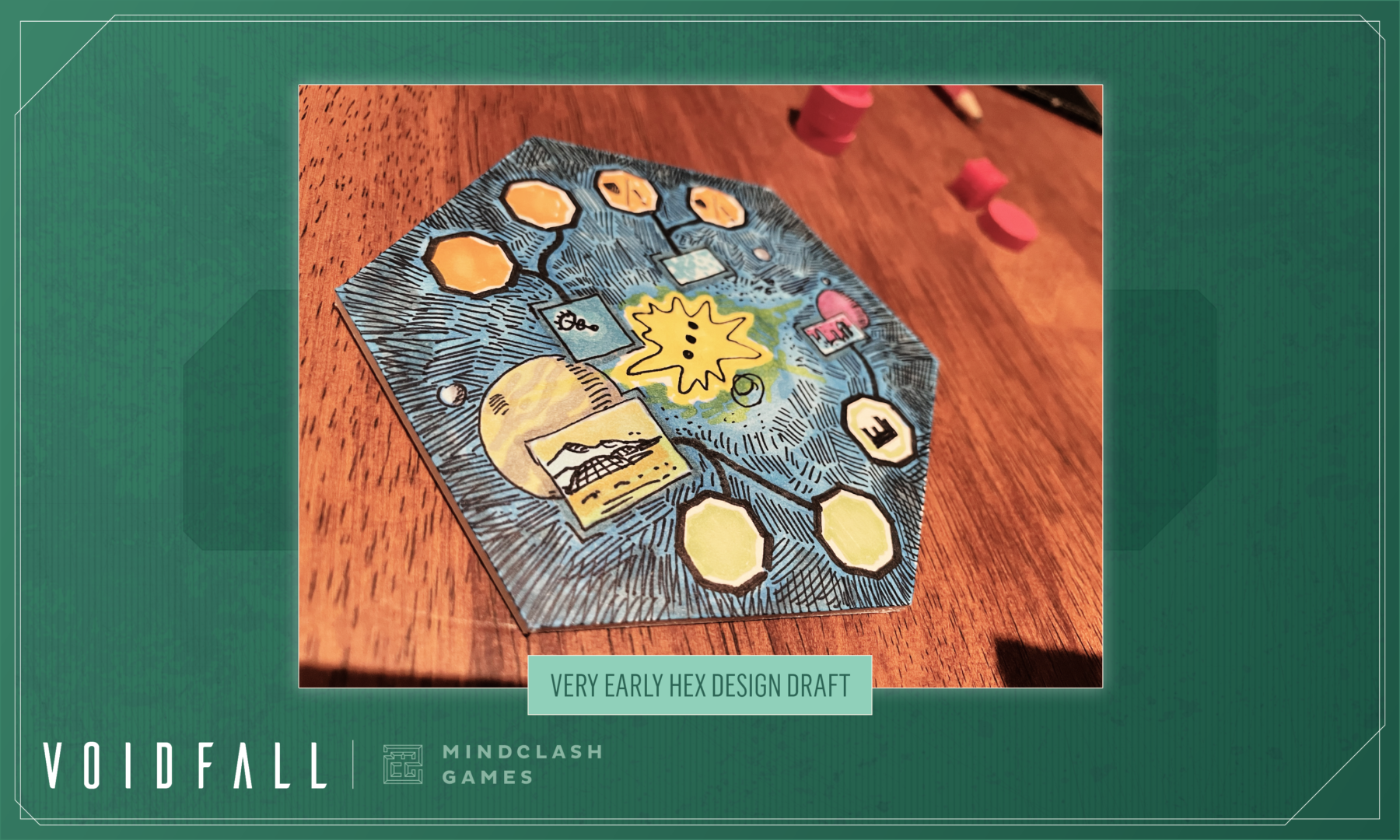
We are very proud of the game, and the journey it takes players on. It’s been a long road for me as well, and I am very excited to see you join us on Kickstarter as the culmination of three years of work with Mindclash (and many more beforehand)!
"Today’s Design Spotlight concludes our 10 week long series - thank you so much for following along and commenting on these posts week by week, we hope we managed to introduce this ambitious project from every exciting design angle!  We still have a lot of surprises during the Kickstarter, which is now less than a week away, but before that, we’d like to invite you to join us on Facebook from Saturday, as we begin our intergalactic journey with a prologue chapter. And of course, if you haven’t already, don’t forget to sign up for a notification on Kickstarter, we’re going live on the 28th at 6 pm CEST: https://www.kickstarter.com/projects/mindclash/voidfall" - Viktor Péter, CEO, Mindclash Games
We still have a lot of surprises during the Kickstarter, which is now less than a week away, but before that, we’d like to invite you to join us on Facebook from Saturday, as we begin our intergalactic journey with a prologue chapter. And of course, if you haven’t already, don’t forget to sign up for a notification on Kickstarter, we’re going live on the 28th at 6 pm CEST: https://www.kickstarter.com/projects/mindclash/voidfall" - Viktor Péter, CEO, Mindclash Games